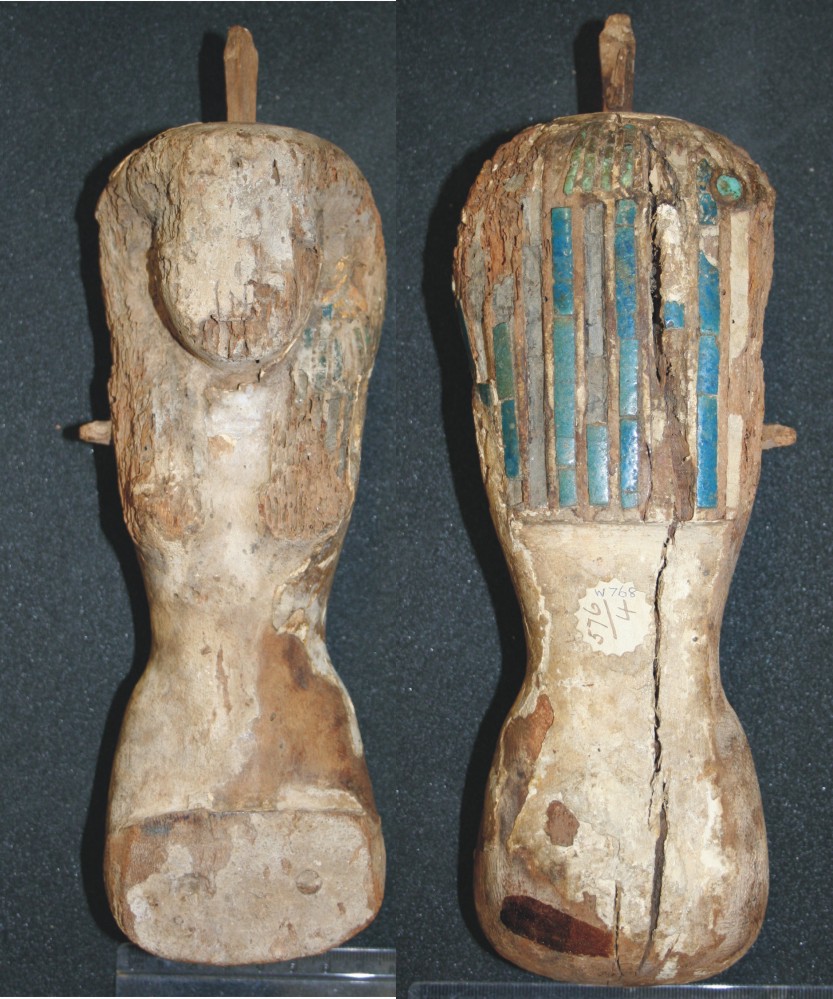W768
 W768 Kneeling Isis or Nephthys
W768 Kneeling Isis or Nephthys
Wooden figure, which is 26.5cm high, of a kneeling woman. The figure has a peg for a headdress and a peg to attach arms as well as the faint remnants of two holes for kneeling legs to peg into. Remains of the gesso paste cover the figure.
The figure probably represents the mourning figures of the goddess’ Isis or Nephthys. As chief divine mourners, these goddesses are usually shown in pairs, kneeling in a mourning pose at either end of a coffin; Isis at the foot and Nephthys at the head.
Examples of complete wooden goddesses can be seen in Pelizaeus Museum, Hildesheim Germany (Eggebrecht 1996, 100). They are kneeling on a base in an attitude of mourning with their hands open-palm to their face.
Isis, through her great power, was able to function as the protector and sustainer of the deceased in the afterlife. Nephthys usually played a subordinate role to her sister Isis but along with Isis she is one of the chief divine mourners held to be protectors of the dead. Female mourners were an important part of a funeral procession. Some women at funerals impersonated the two goddesses lamenting the death of the murdered god Osiris.
This object was originally part of the MacGregor collection purchased by Sir Henry Wellcome in 1922. It is described in the MacGregor catalogue as ‘a…decayed fragment of a fine seated figure of Isis, wearing a …wig, inlaid with strips of faience’ lot 576. The faience strips depict the blue hair of the goddesses.
Other Egypt Centre items associated with Isis
Further Reading
Eggebrecht, A., 1996 Pelizaes Museum Hildesheim. Mainz: Verlag Philipp Von Zabern.
Robins, G., 1993. Women in Ancient Egypt. London: The British Museum Press.
Taylor, J., 2001. Death and the Afterlife in Ancient Egypt. London: The British Museum Press.
Watterson, B., 1996. Gods of Ancient Egypt. Stroud: Sutton Publishing Ltd.
Wilkinson, R. H., 2003. The Complete Gods and Goddesses of Ancient Egypt London: Thames and Hudson.